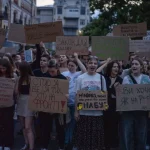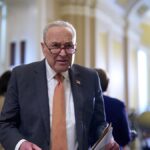

The number of new applications for unemployment benefits rose by 28,000 last week to 218,000, an uptick that could be the first sign of a slowdown in hiring to come, although weekly jobless claims have been near historic lows and one of the brightest economic indicators in recent months.
The scarcity of weekly jobless claims, reported Thursday by the Department of Labor, indicates that layoffs are rare as employers try to hold on to workers. Weekly claims began declining after new cases of COVID-19 peaked in mid-January and have hovered at low levels since mid-February.
SEN. SULLIVAN LOOKS TO CURB POWER OF GIANT INVESTMENT FIRMS EMBRACING ESG
Despite the country’s destructive inflation and the Federal Reserve starting to raise interest rates for the first time in years, the United States labor market has been tight and job growth has been red-hot, although that is expected to cool as the central bank tightens monetary policy.
“Jobless claims are rising. Here comes the economic slowdown,” said Chris Rupkey, the chief economist at FWDBONDS. “The Fed’s rate hikes may be over in a hurry if the job layoffs continue to mount.”
As the pandemic fades, jobless claims have tumbled. Around this time in May of 2021, new claims were averaging about 450,000 per week.
The lowest number of recent jobless claims was the 166,000 tallied in mid-March. That represents the fewest number of new weekly claims since 1968.
In terms of the labor market, the economy once again exceeded expectations and notched 428,000 new jobs in April, even after a reported contraction in GDP for the first quarter of 2022.
Inflation, though, is soaring. Last week the Bureau of Labor Statistics revealed that consumer prices increased by 8.3% for the 12 months ending in April, a slight downward turn from the 8.5% tallied in March but still far above the Fed’s 2% target.
CLICK HERE TO READ MORE FROM THE WASHINGTON EXAMINER
The stock market has also been tanking in recent weeks. On Wednesday, the Dow Jones Industrial Average had its worst day since 2020, when COVID-19 and related restrictions were still wreaking havoc on the global financial system.
The declines are indicative of investor anxiety surrounding the future of the economy, which some economists predict will enter a recession this year. On Wednesday, Treasury Secretary Janet Yellen said that “higher food and energy prices are having stagflationary effects.” Stagflation is when inflation is running hot while economic growth and the labor market suffer.





